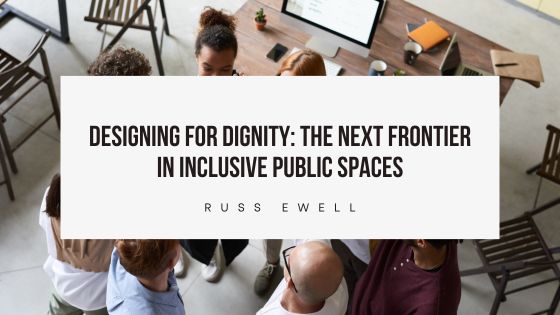In cities around the world, public spaces are where community life unfolds. Parks, plazas, libraries, transit stations, and sidewalks serve as daily touchpoints for millions. Yet for many people—especially those with disabilities, neurodivergence, or mobility challenges—these spaces are not always welcoming or accessible. The next frontier in inclusive design goes beyond compliance checklists. It’s about designing for dignity, where every person feels valued, respected, and included.
The Limitations of “Accessible Enough”
Many public spaces technically meet accessibility standards, but still fall short of being genuinely inclusive. A steep ramp at the back of a building, a bathroom that barely fits a wheelchair, or confusing signage might comply with regulations but fail to deliver a dignified experience. Designing for dignity means moving past the minimum and considering how people experience the space emotionally, socially, and physically.
What Does Dignity Look Like in Public Design?
Designing with dignity involves more than physical access. It starts with empathy and human-centered thinking. For example, a truly inclusive playground doesn’t just include a wheelchair-accessible swing—it ensures children of all abilities can play together. A dignified public restroom offers privacy and cleanliness for caregivers assisting older adults or people with complex needs. Transit systems designed for dignity consider sensory overload, clear wayfinding, and multiple modes of communication—not just curb cuts and elevators.
Universal Design as a Foundation
One approach that supports dignity in public design is universal design—the concept of creating spaces usable by all people, to the greatest extent possible, without the need for adaptation. Features like wider pathways, automatic doors, contrasting color cues, and quiet zones don’t only help people with disabilities—they benefit everyone. Parents with strollers, older adults, tourists unfamiliar with the area, and people with temporary injuries all gain from environments that are easy to navigate and welcoming.
Inclusion Through Co-Design
Truly inclusive public spaces are not created in a vacuum. They’re the result of collaboration with the communities who use them. Co-design processes, where planners and architects engage directly with individuals from diverse backgrounds, bring in perspectives often overlooked. When people are invited to share their lived experience, design outcomes reflect real needs—not assumptions.
A Moral Imperative and a Social Opportunity
Designing for dignity is more than a technical challenge—it’s a moral and social imperative. Everyone deserves equal opportunity to move through the world with comfort and confidence. Inclusive public spaces foster social participation, reduce isolation, and build a stronger sense of community. They signal that every person belongs, regardless of ability or circumstance.
Conclusion
The future of public space design is not just about innovation—it’s about intention. As cities grow and evolve, so should our commitment to dignity and inclusion. By centering human experience in design, we create spaces that don’t just serve the public—they uplift it. In the process, we build not only better environments, but better societies.

